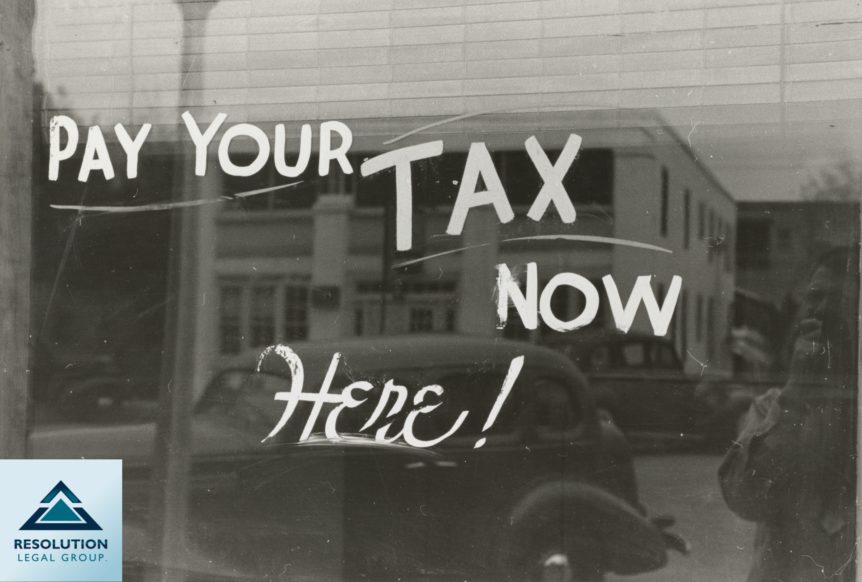In the six weeks following the enactment of the Coronavirus Aid, Relief, and Economic Security Act (the CARES Act), which established the Paycheck Protection Program (PPP), the Small Business Association (SBA) has funded more than 3.8 million loans for a total of more than half a trillion dollars. PPP loans are attractive to borrowers because of direct economic benefits in the form of loan forgiveness and indirect tax benefits to ease the borrower’s tax burden. The SBA and the IRS have provided relatively clear guidance related to loan forgiveness, but a recent IRS Notice has caused some concern for borrowers and tax practitioners related to the indirect tax benefits of the PPP loan.
Direct Economic Benefits. The SBA will forgive the principal and accrued interest, in full or in part, if the borrower both (1) maintains its headcount and payroll at pre-pandemic levels and (2) uses loan proceeds to fund covered expenses, including payroll. Guidance for this forgiveness can be found here.
Indirect Tax Benefits. In addition to the direct economic benefit, many borrowers and practitioners believed the CARES Act also provided two significant tax benefits.
- First, the CARES Act appears to exclude the amount of any forgiven PPP loan proceeds from being treated as income to the borrower. This is done by excluding the application of the provisions of the Internal Revenue Code (the Code) that would normally require taxpayers to recognize income from the discharge of indebtedness (IDI).
- Second, many borrowers and tax practitioners believed the CARES Act was designed to allow borrowers to deduct expenses funded by loan proceeds even if the PPP loan was forgiven. This is significant because traditionally such deductions would be disallowed or limited.
As clients began applying for these loans, tax practitioners began asking a number of questions about the consequences of the loan forgiveness and the corresponding exclusion from income, and this post focuses on two: (1) If IDI is excluded from income, may borrowers deduct expenses funded by the loan proceeds?; and (2) If borrowers are allowed to deduct expenses funded by loan proceeds to the extent those deductions create a net operating loss (NOL), may borrowers recognize that NOL and carry it forward?
On April 30, the IRS issued Notice 2020-32, answering these two questions (for the moment) in the negative by pointing to Section 265 of the Code, which bars taxpayers from deducting expenses and interest from tax-exempt income. The IRS stated that the prohibition on deductions and interest from tax-exempt income prevents the taxpayer from receiving a “double tax benefit” (one, exclusion from income, and, two, the deductions). While the IRS Notice may be correct when looking solely to the Code and existing case law, many practitioners believe that Congress did, in fact, intend to provide this tax benefit. The American Institute of Certified Public Accountants, for example, announced that it will be seeking legislative clarification, and several legislators have already indicated their intent to clarify these issues in the next coronavirus bill. How did we get here, and why do we believe that Congress’ intent is contrary to the IRS notice? This post explains the current framework of the Code with respect to IDI and then explores the public policy rationale behind the CARES Act.
Current Framework
With some exceptions, the Code requires a taxpayer to recognize as income the amount by which a lender cancels a debt owed by that taxpayer. The Code, however, allows the taxpayer to offset that IDI with existing deductions. On the other hand, the Code generally disallows deductions for expenses that would have otherwise been deductible if they are allocable to a class of income that is exempt from taxes.
Essentially, under the traditional framework, if a taxpayer recognizes the income, then a taxpayer can take the allocable deductions. If a taxpayer does not recognize the income, then a taxpayer cannot take the allocable deductions. In other words, if a taxpayer has allocable expenses equal to the amount of any loan forgiveness, the effect on net income in either case is the same. Therefore, disallowing a deduction is the same as taxing the income. This begs the question, why would Congress spend the ink to exclude the IDI from income if it also intended to disallow the allocable deductions?
Policy and Congressional Intent behind the PPP loan
By allowing SBA loans to be forgiven if they are spent in a certain manner, Congress is using direct spending (some might call it a grant) to encourage employers to maintain head count, as opposed to terminating employees who then file for unemployment benefits. In addition to, or in lieu of, direct spending, Congress often uses tax incentives and disincentives in order to promote social and economic goals. Tax incentives reduce the tax burden through reduced tax rates or increased deductions and credits. Disincentives increase tax burdens through increased tax rates and reduced or disallowed deductions and credits.
Why would Congress spend the ink to exclude forgiven PPP loan proceeds (IDI) from income? The most straight forward answer is that Congress employed a tax incentive to promote the social and economic goal of maintaining employment. In other words, it did not want to tax the direct economic benefit (or grant). All of this is consistent with the actual name of the program (Paycheck Protection); one need not even look to legislative history. The IRS, however, by issuing guidance that would disallow allocable deductions, has stripped the PPP of the tax incentive and has apparently taken the position that either (1) Congress did want to tax the economic benefit (unlikely), or (2) Congress failed in the CARES Act to appropriately address the prohibition of deductions contained in Section 265 of the Code.
What about the Net Operating Losses?
The Code, sans CARES Act, generally requires a taxpayer to reduce an NOL to the extent that a taxpayer can exclude IDI from its income. The CARES Act does not directly address whether a taxpayer must reduce its NOL as a result of PPP loan forgiveness that is excluded from income, while other provisions of the CARES Act (1) extend the availability of NOL carrybacks, (2) suspend the 80 percent NOL limit, and (3) provide tax credits for qualifying payroll expenses to employers who do not receive PPP loans. Thus, one could argue Congress meant to allow NOLs resulting from deductions associated with allocable expenses. Further, many expect the effects of the pandemic to last well into the future and believe taxpayers should be allowed to recognize and retain their NOLs unaffected in order to ease the tax burden during an economic downturn. Unless Congress issues supplemental guidance or addresses these issues in future legislation, IRS Notice 2020-32 alerts employers to the fact they may not recognize deductions associated with allocable expenses nor, consequently, claim NOLs resulting from allocable expenses.
Conclusion
Most practitioners expect Congress will enact another round of legislation to address the continuing economic effects of the pandemic. Legislators have indicated their desire to address the issues above as part of that future legislation. We have good reason to believe that Congress will act to clarify its intent with respect to the deductions, but it remains to be seen how Congress intended to treat NOLs or whether they will act to clarify the NOL issue. In the meantime, taxpayers are on notice they should, pending further developments, discount the likelihood of receiving any tax benefit from expenses funded by their PPP loans.
For more information contact Resolution Legal Group at 405-235-6500.
Disclaimer:
The information contained in Resolution Legal Group’s publications and on its website (“RLG’s Communications”) does not, and is not intended to, constitute legal advice on any specific facts, circumstances, or subject matter.
All information, content, and materials available in RLG’s Communications are provided solely for general informational purposes and may not constitute the most up-to-date legal or other information. Further, you may not quote or reference RLG’s Communications in any other publication or proceeding without obtaining Resolution Legal Group’s prior written consent, which may be given or withheld at our discretion.
RLG’s Communications are not an offer to represent you, nor are they intended to create an attorney-client relationship with you. No recipients of content from RLG’s Communications, whether clients or otherwise, should act or refrain from acting on the basis of information contained therein without seeking the appropriate legal and/or professional advice from an attorney and/or other licensed professional in the relevant jurisdiction regarding the particular facts and circumstances at issue. Only your individual attorney can provide assurances that the information contained herein – and your interpretation thereof – is applicable or appropriate to your particular situation. All liability with respect to actions taken or not taken based on the contents of this site are hereby expressly disclaimed.
RLG’s Communications may contain links to other third-party websites. Such links are provided only for the convenience of the reader, user, or browser; RLG does not recommend or endorse the contents of the third-party sites. The views set forth in RLG’s Communications are the personal views of the author and do not necessarily reflect those of RLG as a whole. The content on this posting is provided “as is;” no representations are made that the content is error-free.

